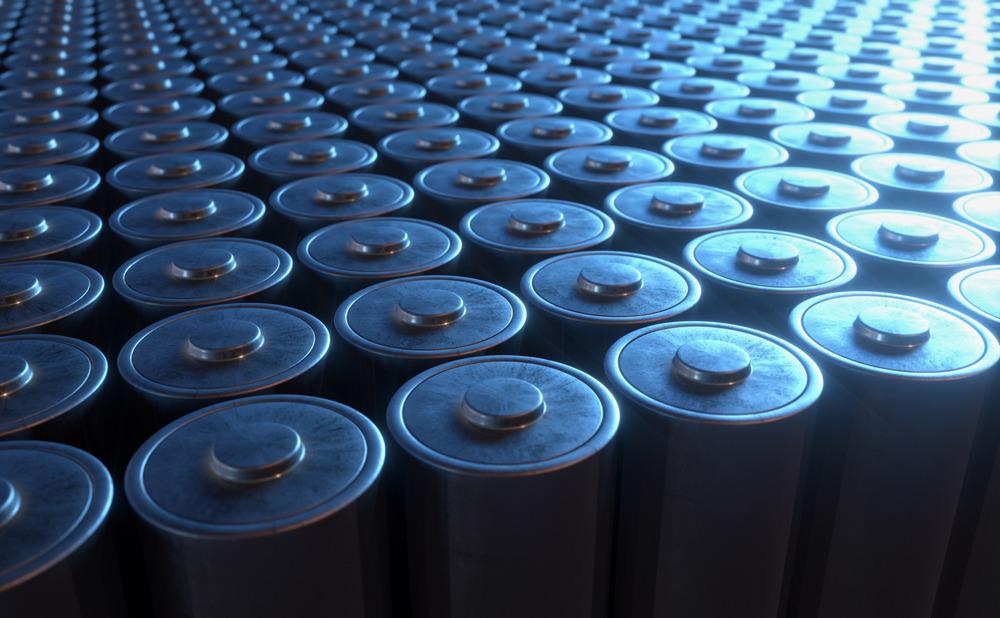Amongst battery technologies, lithium-sulfur (Li-S) devices are perceived as one of the most attractive next-generation supplementary rechargeable batteries. New research using Zirconium nanocrystal synthesis is described in a recent paper published in the journal Energy Storage Materials, which may aid the development of long-lasting batteries.

Study: Ultrafine zirconium boride nanoparticles constructed bidirectional catalyst for ultrafast and long-lived lithium-sulfur batteries. Image Credit: ktsdesign/Shutterstock.com
Limitation of Lithium-Sulfur Batteries
The fundamental issue is that current lithium-sulfur batteries cannot be charged sufficiently on a frequent basis before they lose their commercial viability. It all comes down to internal chemical reactions: charging a Li-S battery generates chemical deposits to form, which damage the cells and reduce their lifespan.
The "shuttling effect" describes the phenomenon in which soluble intermediary lithium sulfides bounce on electrodes. Metallic lithium's high reactivity and the forming of lithium dendrites have long been accused of major safety flaws that exacerbate side reactions between electrodes and raise the chances of an inner short circuit, creating battery temperature and air control extremely difficult.
Due to these issues, the actual capacity is substantially lower than intangible calculation, charge density efficiency is low, and recycle ability is weak, severely limiting Li-S battery applications. Studies have previously worked on several projects to resolve such concerns, including the manufacture of sulfur materials, the creation of new electrolyte additives, and the development of a separator modifying layer.
The Novel Invention to Solve the Problem
Borides with strong polarity and conductivity have been demonstrated to be excellent sulfur host substances. The atomic planes of boron and zirconium (ZrB2) alternate in the crystalline structure, forming a 2D network model. ZrB2 exhibits strong conductivity due to the nature of boron's atomic structure, which is comparable to that of graphite, and the outermost zirconium's electronic structure. These findings suggest that ZrB2 does have a promising possibility for sulfur cathode development in Li-S battery cells.
Still, it has received relatively little attention because of its complexity in synthesis with pure phase. Complex treatments and extreme heat of 900 °C are required for ZrB2 synthesizing, and contaminants such as secondary phase items are almost always present.
Suppose ZrB2 are further nanocrystallized using a simple production approach. In this case, the ultrafine ZrB2 nanomaterials will give more active surface area and points of contact with sulfur, increasing the likelihood of a collision between both the sulfur particle and ZrB2, making sulfur activation more frequent.
End results would demonstrate high conductivity and capacity, as well as extended-cycle efficiency, high productivity, and catalytic ability. For Li-S battery cells, ultrafine ZrB2 nanoparticles can improve sulfur efficiency and provide quicker reaction dynamics.
Additionally, at an ultra-high rate of 20 C, the composites cathode can deliver a high capacity. It is needed to maximize the sulfur loading and minimize the quantity of the electrolytes in lithium-sulfur batteries to attain high energy content. These findings suggest that zirconium boride's high conductivity, strong polarity, and bidirectional catalytic characteristics aid in the conversion of polysulfides in space.
B and Zr can dynamically change the kinematics of polysulfide transformation, which offers a theoretical foundation for the logical structural system of sulfur cathode materials high performance, compared to other forms of composite materials.
Development on Further Research
A sulfur host substance for Li-S batteries was successfully synthesized using a nano-sized pure phase ZrB2 mixed with nitrogen-doped graphene (NG) composites made at a low temperature. Findings indicating high-efficiency LiS batteries employing ZrB2/NG composites as hosts demonstrate a wide range of applications for Li-S batteries, shedding new light on the development of borides as sulfur composites. The use of transition metal borides will also be enhanced.
LiS Battery for Broad Application
The maximum possible energy density of LiS batteries has been more than five times that of Li batteries. LiS batteries are a chance to invest in cutting-edge technology that has a broad array of applications, including aircraft, electric vehicles, and marine technologies.
LiS batteries should also be able to withstand severe external pressures, as the batteries must constantly be accessible to power road traffic. A good example is their performance in low temperatures. Due to the slowed ion mobility and slower reaction kinetics, LiS batteries' performance degrades significantly at low temperatures - Zirconium and Boron nanoparticles can solve this problem. Essentially, electrolyte modification and the investigation of quicker reaction routes may yield superior outcomes. In comparison, it appears that dealing with this challenge in stationary energy storage is easier and more cost-effective.
Continue reading: Sila Nanotechnologies: A Next-Gen Lithium-Ion Battery Solution.
References
Wang, B., (2021). Ultrafine zirconium boride nanoparticles constructed bidirectional catalyst for ultrafast and long-lived lithium-sulfur batteries. Energy Storage Materials. DOI: https://doi.org/10.1016/j.ensm.2021.11.039.
Disclaimer: The views expressed here are those of the author expressed in their private capacity and do not necessarily represent the views of AZoM.com Limited T/A AZoNetwork the owner and operator of this website. This disclaimer forms part of the Terms and conditions of use of this website.